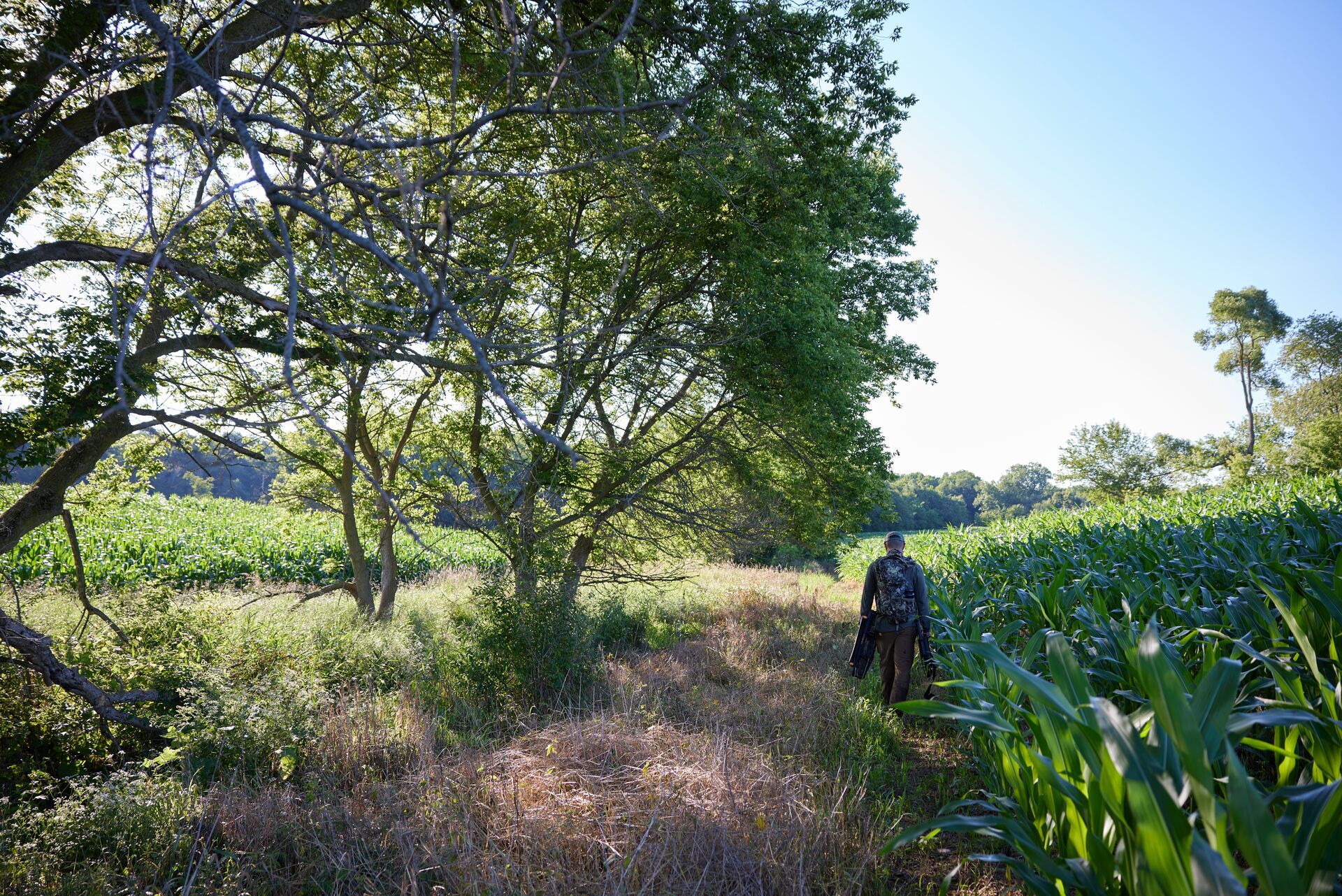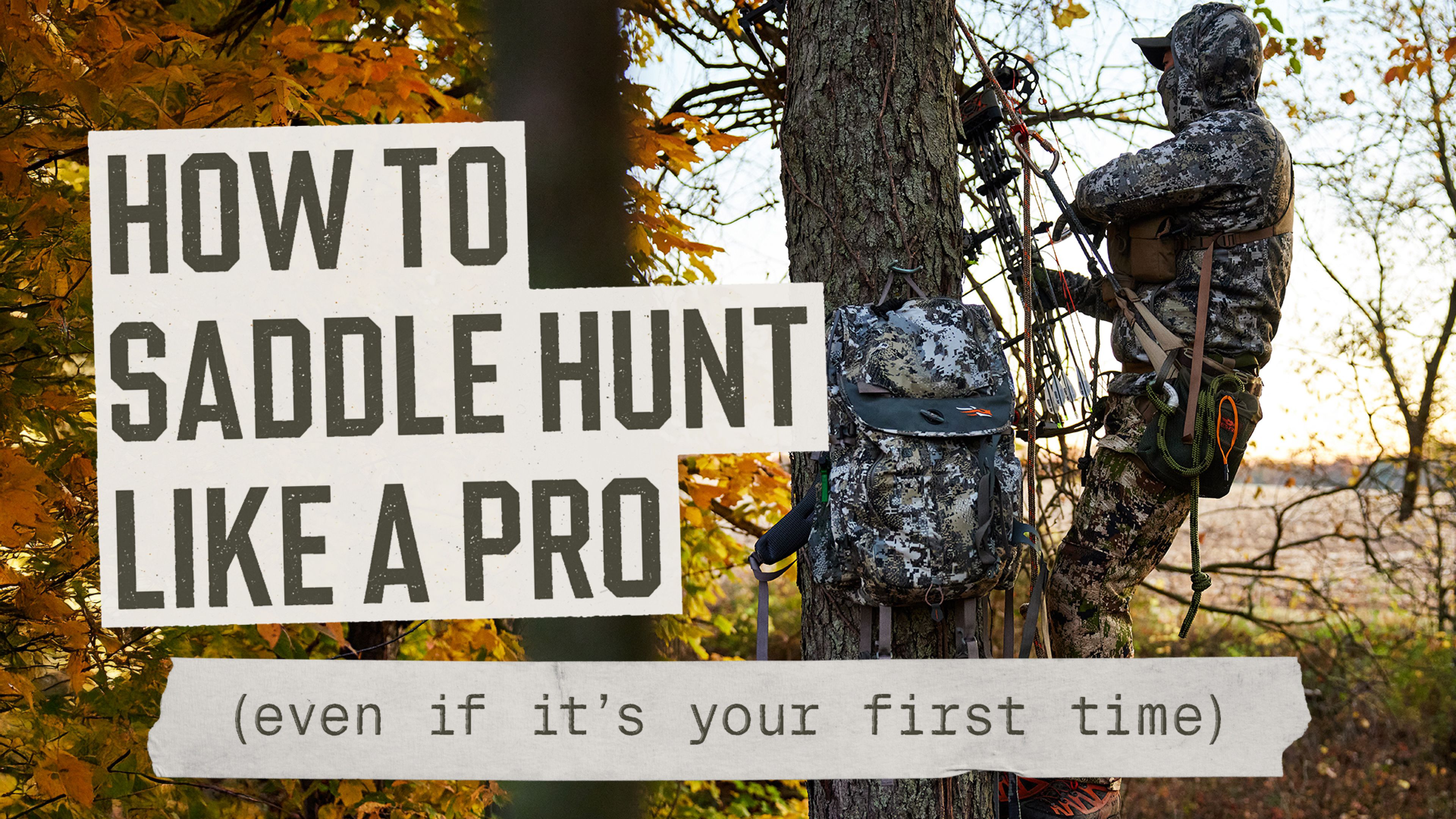Now, we use our phones for everything; we book hotel rooms on them, text, call, do things on social media, and make dinner reservations online.
Although hunting gear probably doesn't affect the general population in that dramatic of a way, we've all had pieces of gear that are game changers as well. For some, it could be a trail camera; for others, it could be mock scrapes.
For me, it was starting to bow hunt from a tree saddle. So, today, I want to share what drew me to saddle hunting and how I've learned to become a successful hunter with this tool.
Updated August 26, 2025
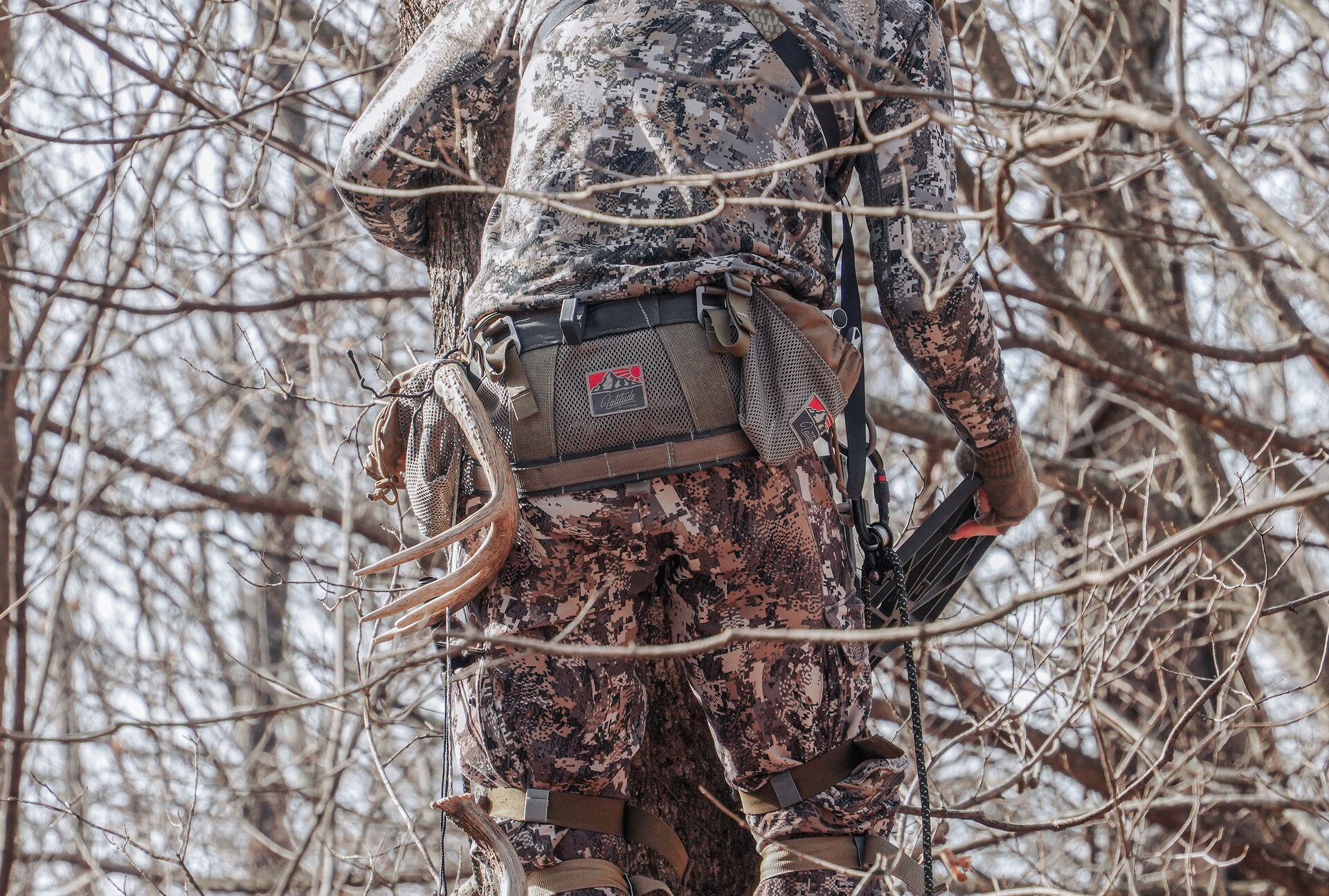
What is a Tree Saddle?
A tree saddle, or tree harness or "sling," as some people call it, is a device hunters can use to get into a tree to ambush hunt critters.
Primarily, saddles are used by whitetail hunters. However, hunters have taken many species from a saddle.
Saddles are small harnesses made from various types of fabric designed to sit under the user's rear end, similar to a swing. The harness has loops on either side where you can connect a lineman's belt to help you climb the tree and set up.
In addition, there will be a rope or similar material that forms a loop going from one hip to the other, called a bridge. The bridge is what the hunter uses to connect the tether rope from the tree to the saddle, similar to the lifeline of a tree stand harness.
What You Need to Saddle Hunt
To effectively use a tree saddle, you will need a few items:
Some other accessories you might consider include a Ropeman ascender, a gear hanger strap, and a bow rope. However, none of these are necessary; they just make your job as a saddle hunter easier.
The equipment for saddle hunting is designed to be user-friendly, efficient, and lightweight. So don't let that list intimidate you or deter you from giving saddle hunting a try.
Why Hunt from a Saddle?
One of the key advantages of hunting from a saddle is how mobile you can be.
When I saddle hunt, I wear my saddle into the woods and carry my bow. Everything else goes into my backpack, which only weighs about twenty pounds. That includes extra clothes, water, coffee, and, of course, snacks.
If the gear you needed to saddle hunt was heavy and difficult to set up, its mobility would be null and void.
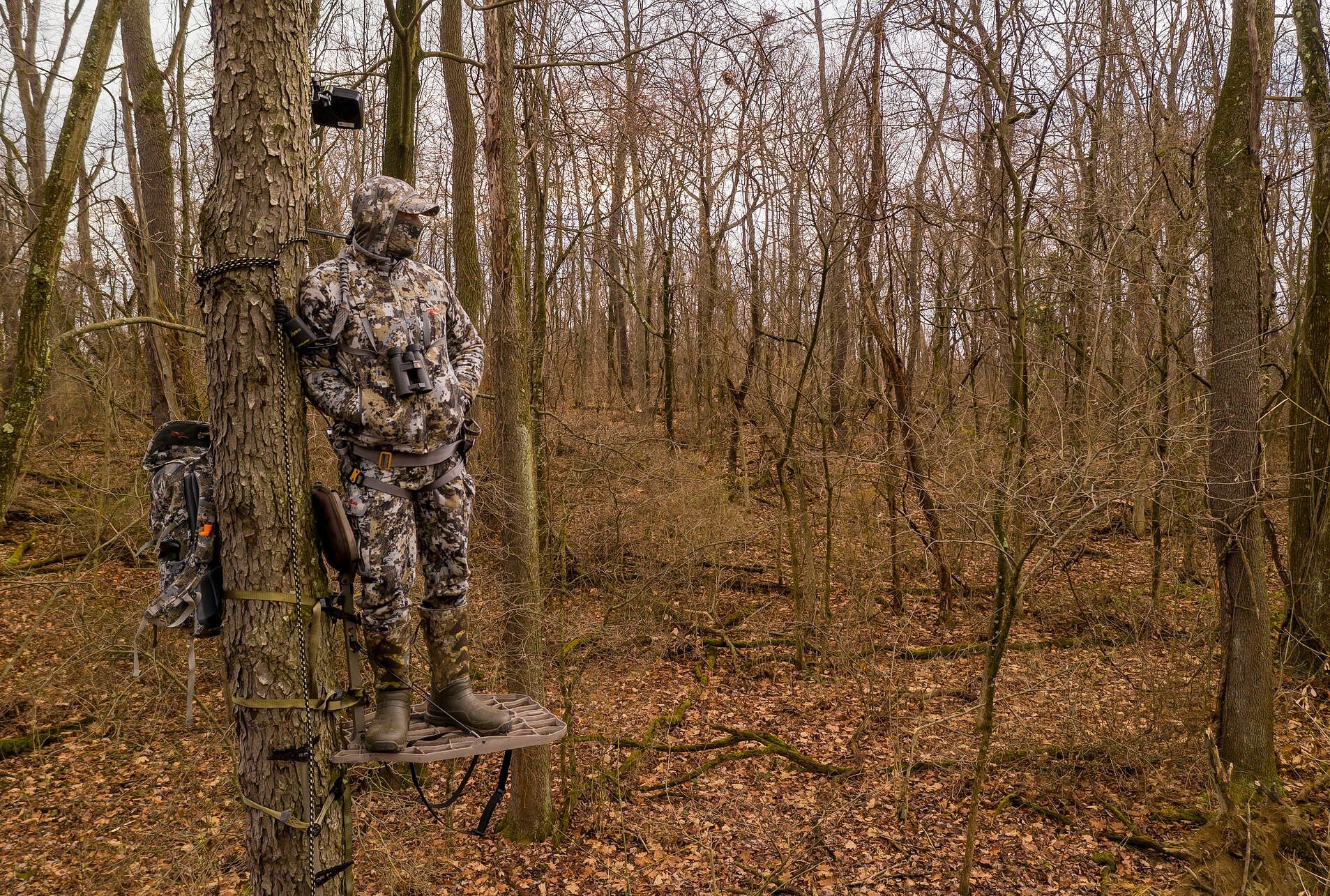
How Do Saddles Compare to Other Tree Stands?
If you're new to saddle hunting, perhaps you've hunted using other methods prior to considering a saddle as an option. Although there are some similarities, a tree saddle really stands out as unique.
From the perspective of a ground blind to a tree, it would be hard to find any similarities outside of the weapon options you have when hunting each method. However, the similarities are plentiful from a tree.
A tree stand, either a ladder stand, hang-on stand, or climber, is very similar to a saddle. Each of them offers an elevated way to ambush your quarry, each of them offers various methods to ensure the safety of the hunter while climbing, and each of them has designed ways to help the hunter stay comfortable.
Of these, hang-on stands are the most similar. For either method, you will need climbing sticks and a lineman's belt. In addition, for a hang-on or a saddle, you will carry all of your gear on your back, likely for each hunt you embark on, so that you can stay mobile and hunt the deer you're after from a fresh sit each time.
You will also need a safety harness if you choose to hunt from a hang-on tree stand.
Concealment and Mobility
From each style of tree stand, you will sit with your back facing the tree and rely on concealment from behind you and in front of you to shield you from the deer seeing your movements.
However, when you hunt from a saddle, you hunt with your body facing the tree you're in, so you can use the tree to hide behind when deer are in view.
Because of the dexterity a saddle offers you, in comparison to other tree stands, you can shoot 360 degrees around the tree, another great perk of this style of hunting.
The mobility of saddle hunting is one of its critical advantages. Now that I've had some practice, I can usually climb a tree in about ten minutes, assuming I'm taking my time to be quiet.
Part of this process is selecting the correct tree. Although you can get into nearly any tree while saddle hunting, I prefer to be a little more selective.
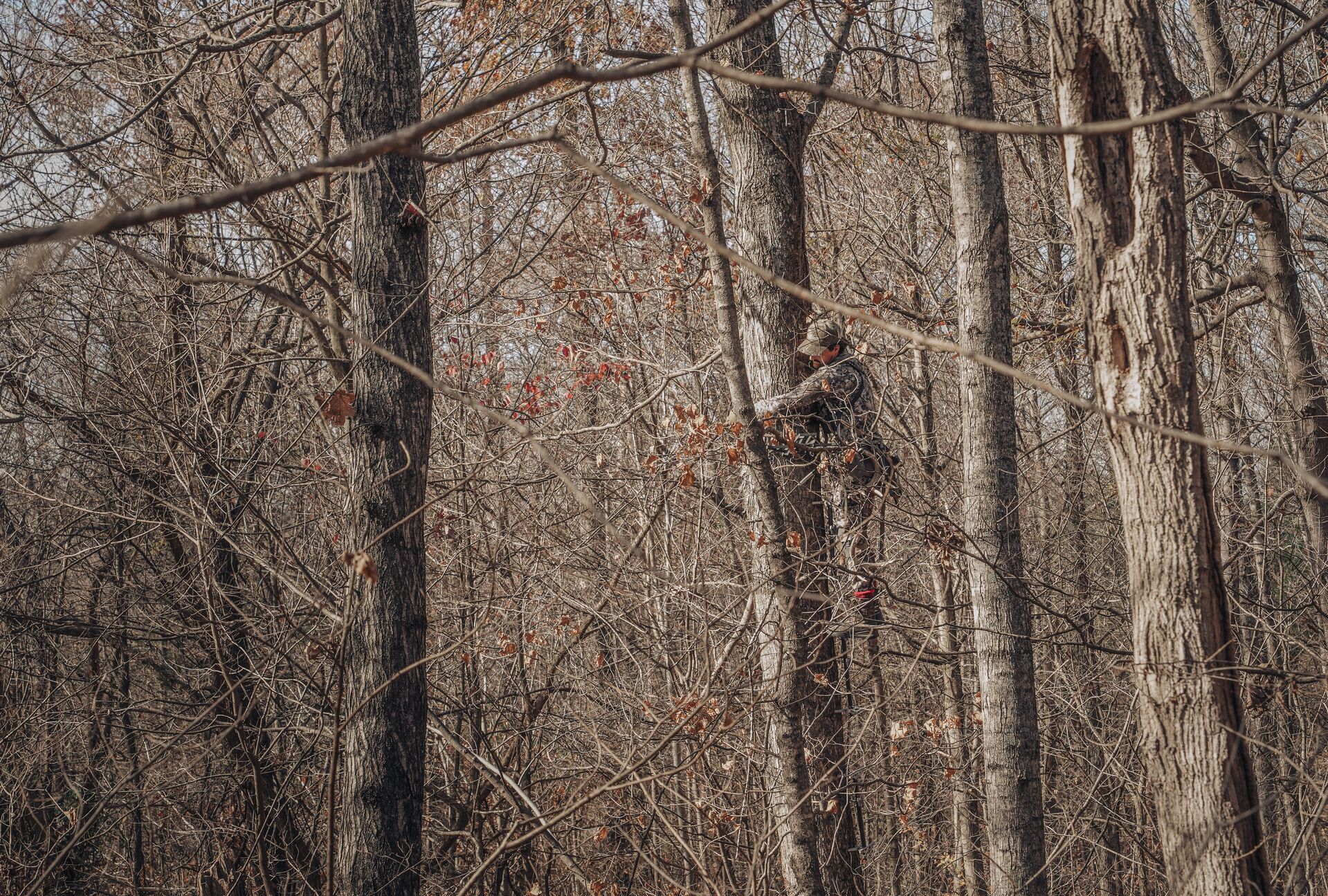
Choosing a Tree
Two types of trees are favorites of mine, mostly because I can climb them easily and because they provide cover.
First, I love oak trees. Their bark grips the climbing sticks and platform really well, so I feel extra safe when climbing them.
When I'm looking for a specific oak to climb, I'm looking for a tree with branches that start at around twelve feet high. I hunt from around sixteen feet, so these branches offer some form of concealment from deer below me and also allow me to easily climb the first three-quarters of my ascent without branches to work around.
Another tree I really like is any double-trunked tree with minimal branches below that twelve-foot-high mark. Double-trunked trees are great because you can hunt from one tree and hang your gear from another. This allows plenty of easy shot opportunities in the tree and makes your sit even more comfortable.
The Climb
When I find the tree that works for me, I begin my process of climbing:
- I take off my pack and unload my climbing sticks and the straps used to hold them too tightly to the tree. I then place my first stick at roughly knee height off the ground. This allows for my first step to feel natural.
- Before I continue to climb, I clip my remaining three sticks to either side of my saddle.
- Before climbing onto my first placed stick, I wrap my lineman's belt around the tree and put some tension on it so that I can climb safely.
- Then, I make my way onto my first climbing stick and repeat the process of placing a stick at knee height from the top of that stick.
Repeat the process until you reach the top of your fourth stick.
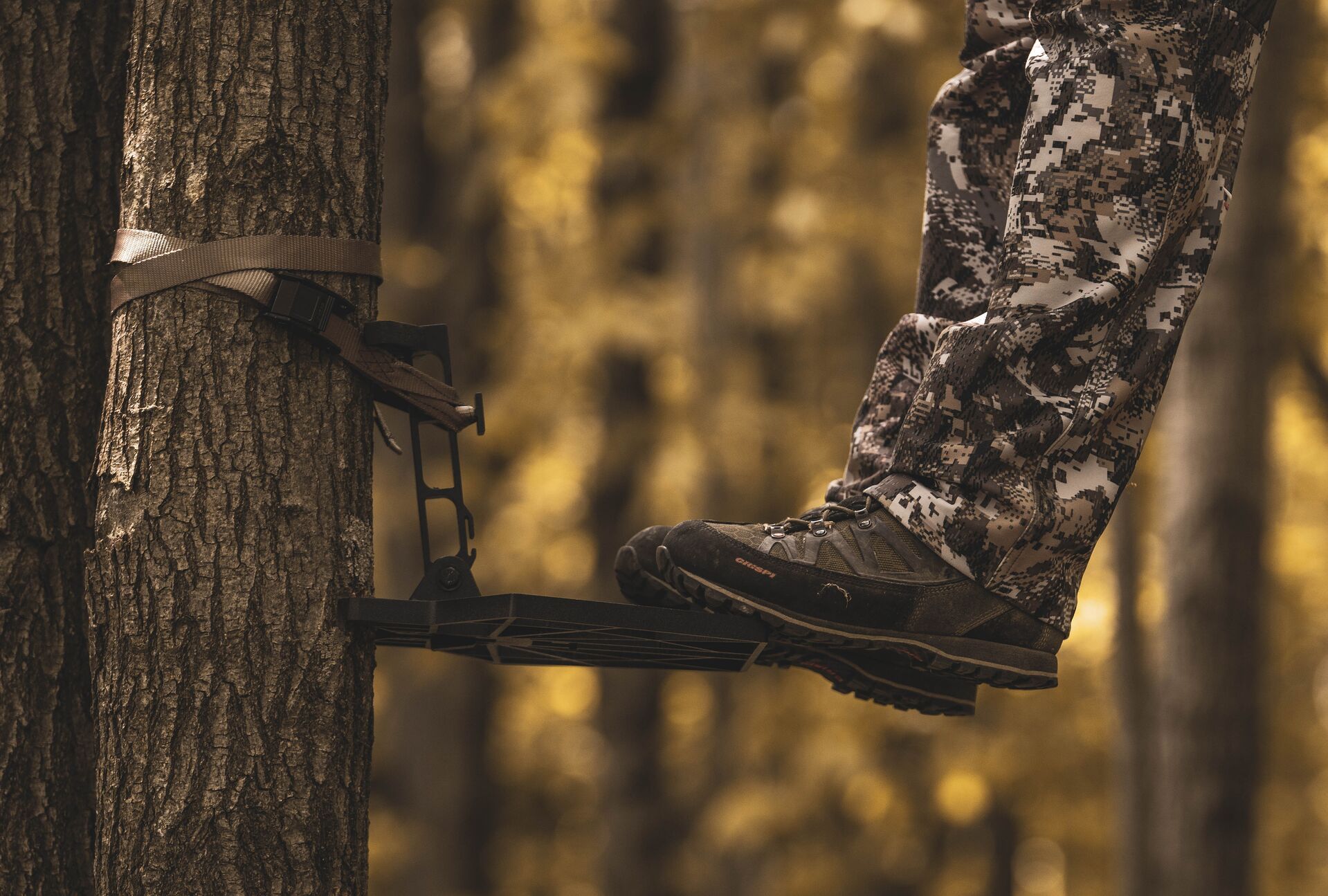
Secure the Platform
At that point, you're ready to secure your platform to the tree you're climbing. I prefer to set my platform even or slightly above the top of my final stick. This allows me to make sure that I am entirely tethered to the tree when I step onto the platform, increasing my safety even further.
When I place my platform, I cinch it tightly to the tree and firmly push it down to really tightly lock it. Because you offset your platform to the right or left of your sticks, it can be difficult to make sure it's tight. For that reason, this step usually takes me the longest.
Again, I'm concerned about the safety of this, so I take my time to make sure I don't make any mistakes.
Get On the Platform
Finally, before stepping on the platform, I loop my tether rope around the tree and clip the carabiner onto the bridge of my saddle. Then, I step over onto the platform and get ready to hunt.
The last thing to do after you're situated on the platform is to hoist all of your gear into the tree and wait for that monster buck to walk by.
Practice During the Off-Season
Because of all the moving parts involved in saddle hunting, it's very important to practice in the offseason.
I begin my practice by packing and repacking my gear so that I know exactly where every strap and rope is in my pack or on my saddle. This has really helped me to be more efficient in the field.
The most important thing to practice, though, is climbing and shooting from the saddle. There really isn't a good way to simulate this without doing it for real.
I like to find a tree in my yard and climb it two sticks high. This height is high enough to get good practice in but low enough that climbing down to retrieve arrows isn't too daunting of a task.
Consider Your Shooting Angles
When I practice shooting, I imagine all the possible angles I might have to release an arrow in the field.
It's not as simple as always shooting a deer in the direction you'd shoot during an archery league or on a 3D target. Sometimes, you have to turn 180 degrees and put your back to the tree to shoot a deer walking thirty yards behind you.
A couple of seasons ago, I took a doe from my saddle that I had to crouch way down to shoot because she walked along a ridge line protected by a branch I hadn't accounted for earlier in the day. Practice for every situation you can dream up because those scenarios will likely happen eventually.
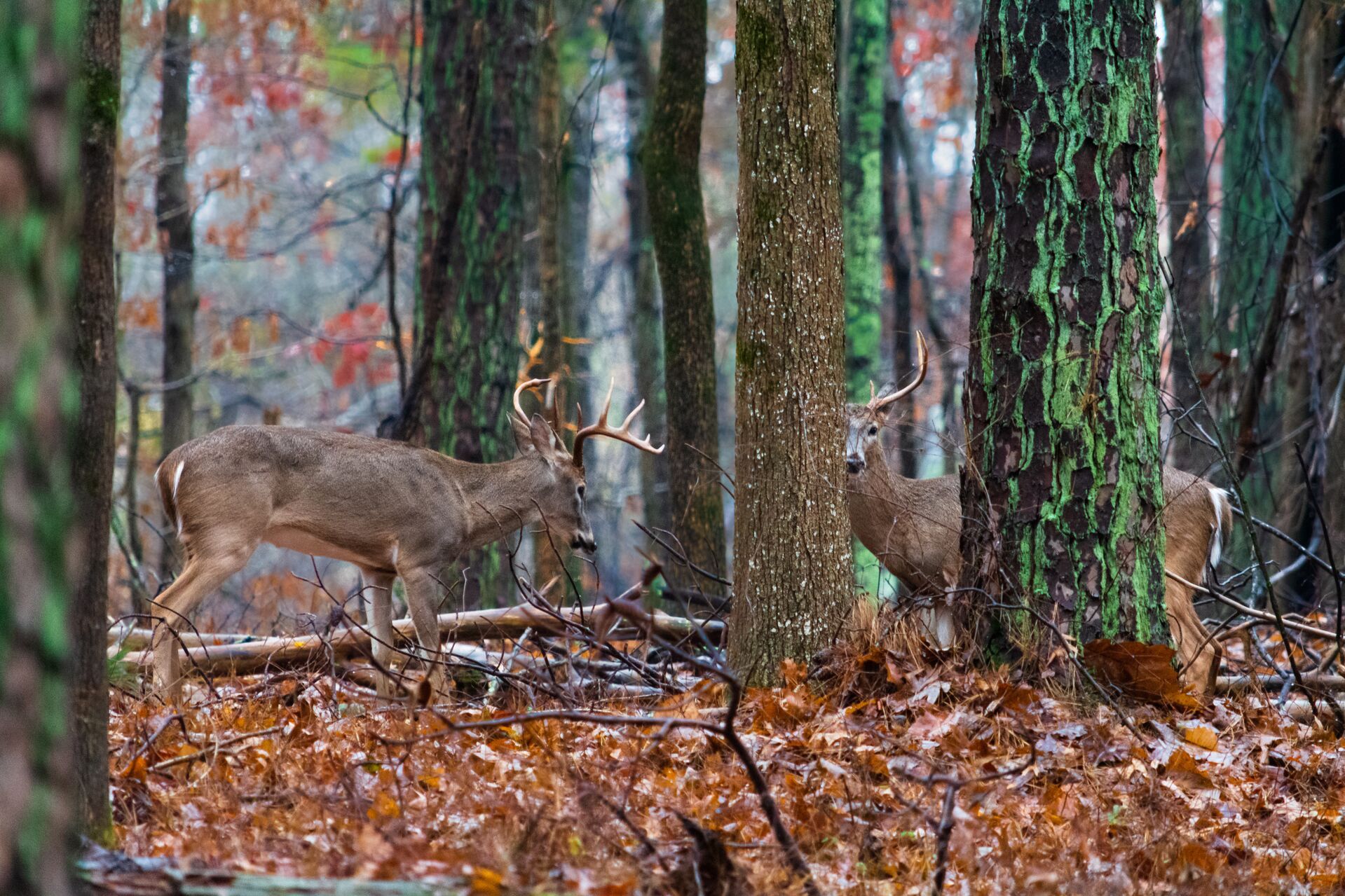
Why I Love Saddle Hunting with HuntWise
Personally, I love saddle hunting for the versatility it offers. I'm able to climb any tree to nearly any height and hunt comfortably.
Furthermore, because of the weight of my gear, distance into the timber is never of concern to me. Because of this, I love using HuntWise to find those transition areas deep in the timber and scout my way to them.
I'll use the app to look for areas where oaks transition to thick, high-stem-count bedding. I'll grab my gear and slowly walk, scouting as I go toward the pin I dropped on the app, marking where I believe the best spot will be. If you have a preset stand or a heavy set-up that could be mobile, you're much less likely to make the trek to the hard-to-reach spots in the woods.
Saddle hunting has completely reshaped the way I approach every hunt. I have confidence that each time I go into the woods, I can scout until I find the spot I deem perfect and a tree that I can easily hunt from.
Now, my seasons are filled with adventure. I'm continually seeing new wood lots and new areas on properties I've hunted forever. I killed my first buck from a saddle on a property I've hunted since I was a little kid, in a spot I would've never hunted if not for my ability to be mobile with my tree saddle.
I love that I can use HuntWise in conjunction with my curiosity about finding new spots. Now, if I see something that even looks remotely interesting, with features that I think will draw or concentrate deer, I'll hunt it with my saddle.
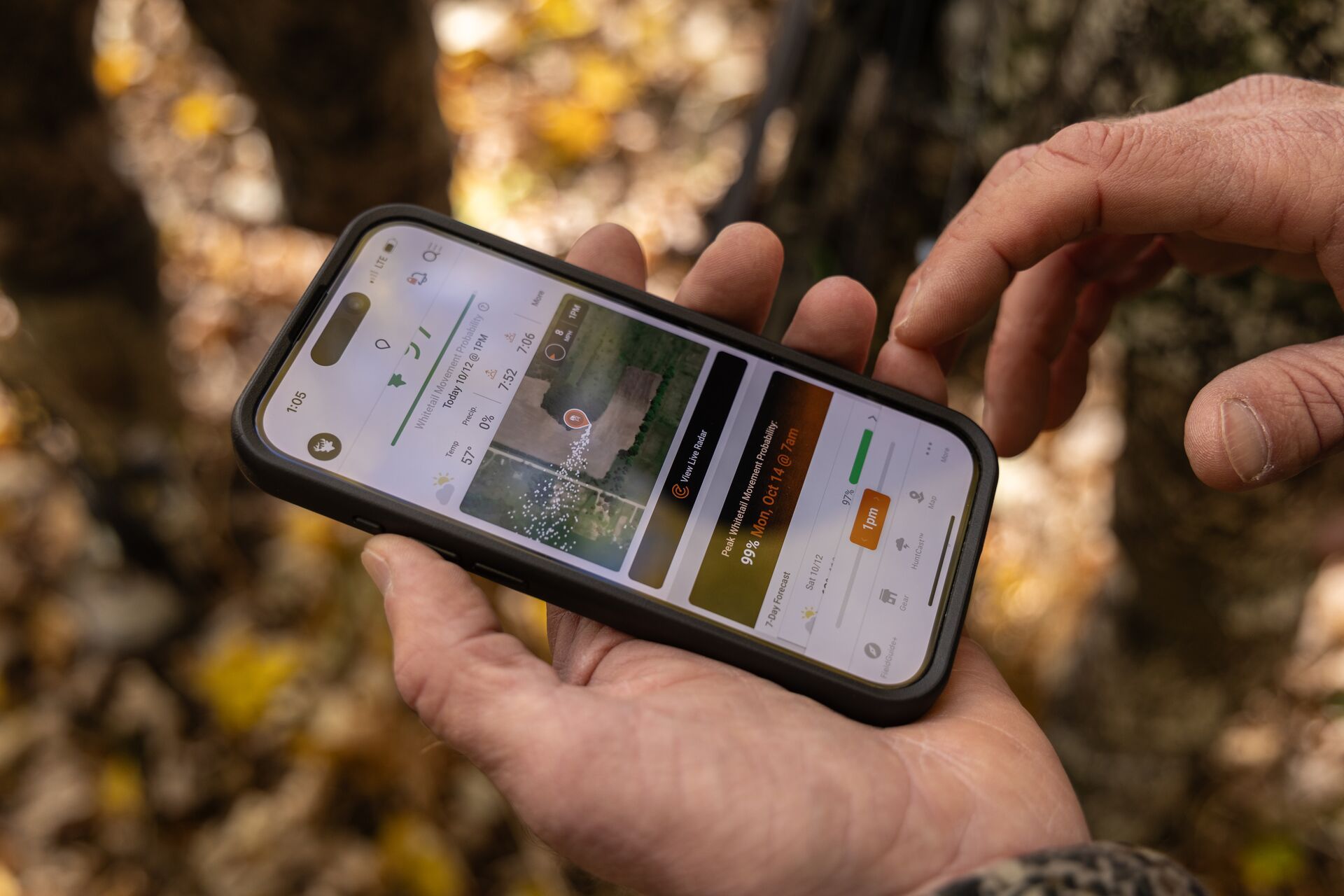
Grab a Tree Saddle and HuntWise for Success This Season
Saddle hunting has been a game-changer for me, and it could be for you as well. This option will change the way you hunt, make hunting even more fun, and put you on fresh stands in front of animals who don't expect you to be in the tree you've selected.
Saddle hunting really can be like a cheat code in the woods, and I believe that everyone who tries it will find a good use for it in their hunting toolkit.
Give it a try this season, and make sure you have HuntWise to help you find the best spots for your saddle.
When you download the HuntWise hunting app for the first time, you can try it free for a week!
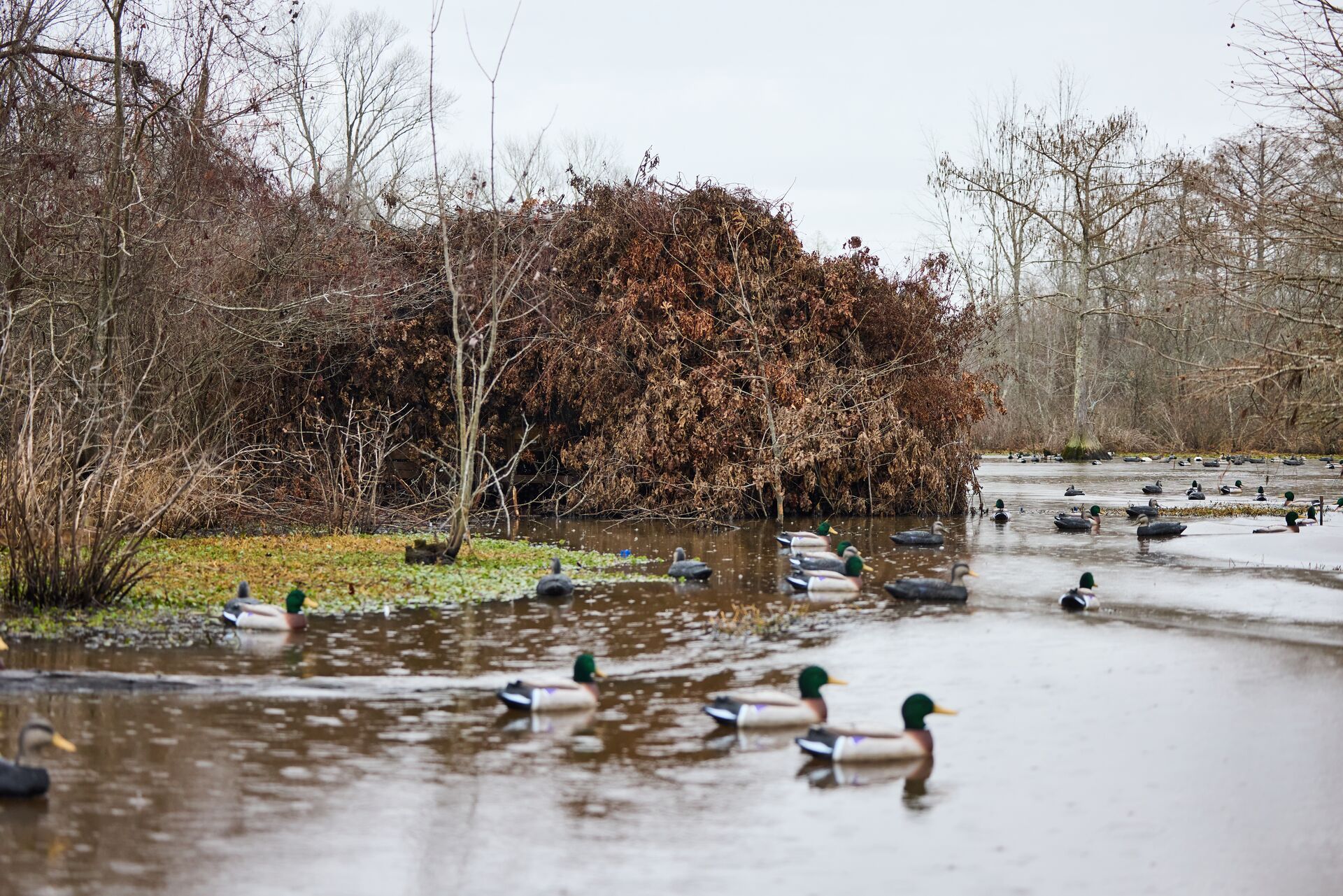
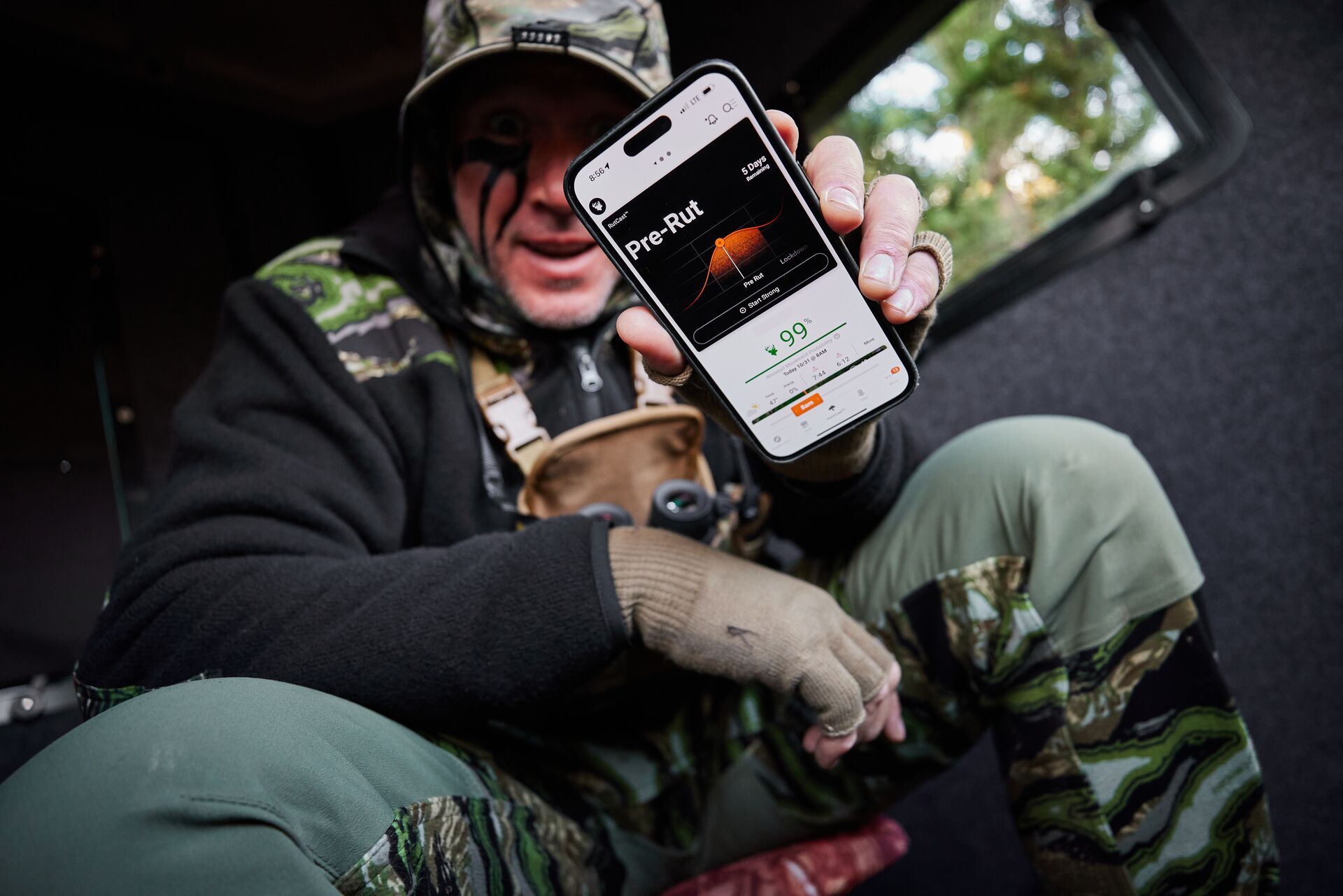
 Hunting Tips
Hunting Tips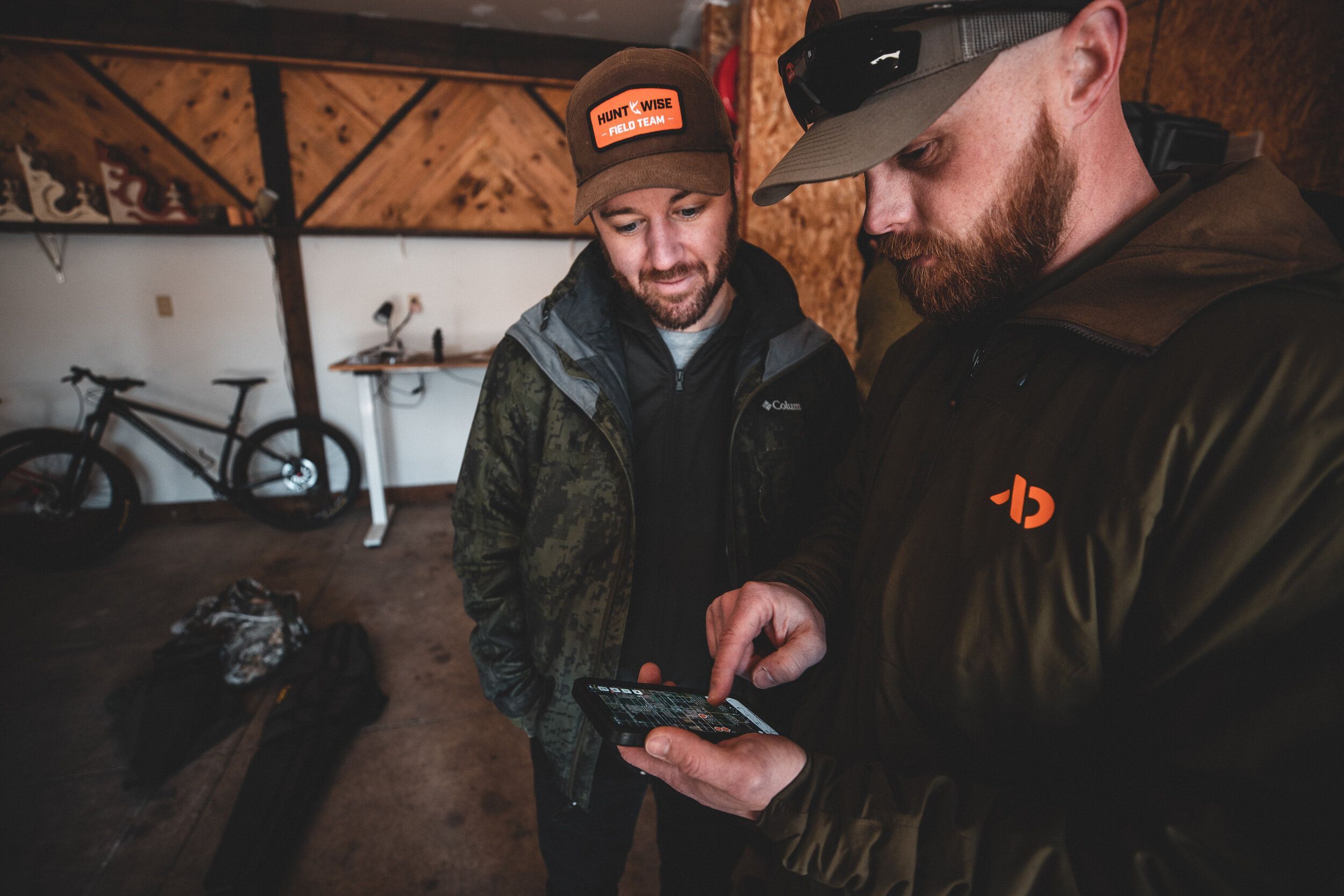 Hunting Tips
Hunting Tips Hunting Tips
Hunting Tips